Columbia Coffee Bean hand-brewing and Baking parameters Story description of three-stage brewing flavor and taste of Huilan coffee
Qianjie Coffee learned that Colombian coffee was first grown commercially in the mid-1830s and has been the country's main export crop throughout the 20th century. The mountainous terrain and many tropical microclimates have made a great contribution to the ideal growth conditions of Colombian coffee, prompting Colombian coffee to establish a recognized "brand" around the world. The original intention of Qianjie Coffee is to understand every coffee country, every coffee producing area, every coffee variety, and the flavor of each coffee treatment, and to establish a visual database. Qianjie Coffee hopes that every fellow coffee lover can have a deeper understanding of the coffee world and explore it with Qianjie Coffee.
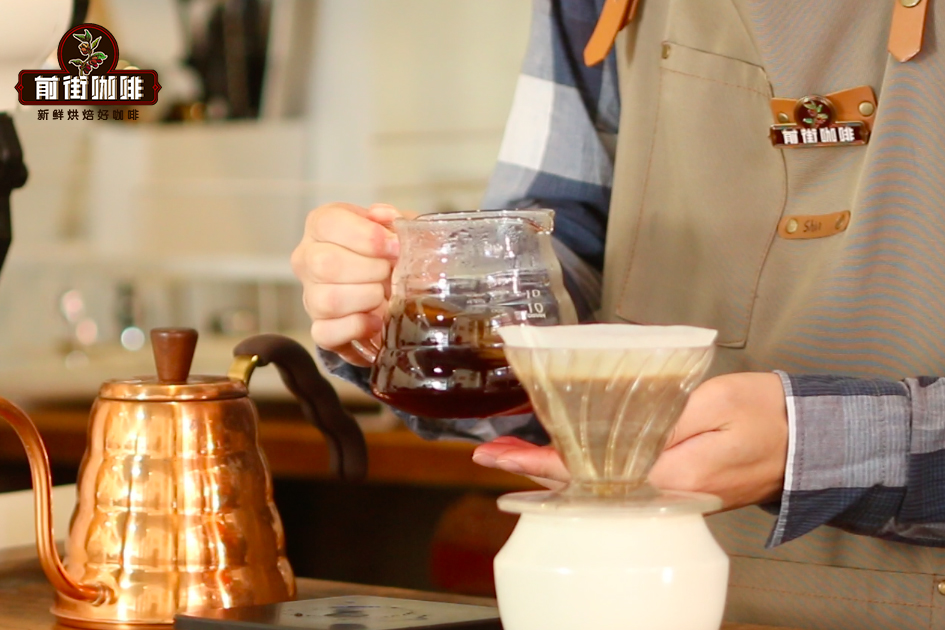
Characteristics of Colombian coffee
The suitable climate in Colombia provides a real "natural pasture" for coffee. The country has also become the second largest coffee producer after Brazil, the world's largest exporter of Arabica coffee beans and the world's largest exporter of washed coffee beans. Colombia has grown about 875000 hectares of coffee in 590 cities and 14 coffee-growing areas. On average, 75 per cent of the country's products are exported to all parts of the world, of which crops account for 10 to 16 per cent of agricultural GDP. To the surprise of Qianjie Coffee, most of the coffee comes from small farms, 60% of Colombian coffee farms are less than one hectare, and only 0.5% of coffee plantations cover more than 20 hectares.
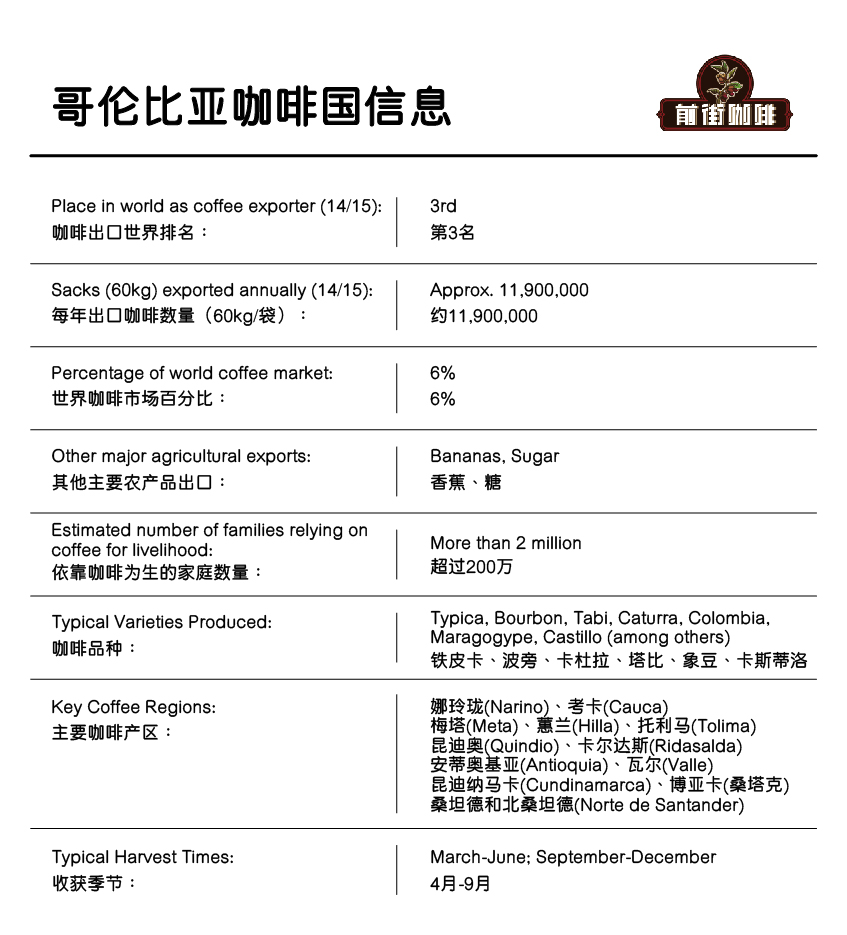
Colombian coffee is a representative and excellent variety of Arabica coffee, and it is also a traditional deep-roasted coffee with a strong and memorable taste. Colombian coffee is characterized by rich and thick aroma, with clear high-quality acidity, high balance, sometimes nutty flavor and endless aftertaste. Colombian coffee is of high quality in terms of appearance and quality.
Volcanic soil + family management
It is said that coffee was introduced by missionaries from Venezuela in 1730 and was grown in the southeast of the country. Later, due to civil war and political reasons, it gradually moved to the western mountainous areas. In an ideal environment of high altitude and volcanic soil, Colombian coffee has been pushed by high-end consumers in the United States and Japan since the 1940s to be ripe before it can be picked manually. They cherish the piece of land they live in, from choosing fertilizer to reclamation will be enough, so there is less land fatigue. In addition to coffee, the locals will plant tall trees or banana trees around the coffee trees. Build an Arbor for coffee trees at the seedling stage to ensure the cool and humid environment needed for coffee growth. Due to the high humidity and small temperature difference in the coffee forest, the coffee beans mature slowly. In addition to the inherent conditions, there is another main reason why Colombian coffee beans are better than Brazil: family-style management. They do not have heavy machinery to harvest and irrigate, nor do they have spare money to hire workers. All coffee fruits are conducive to the accumulation of caffeine and aromatic substances, so Colombian coffee beans are of the best quality.
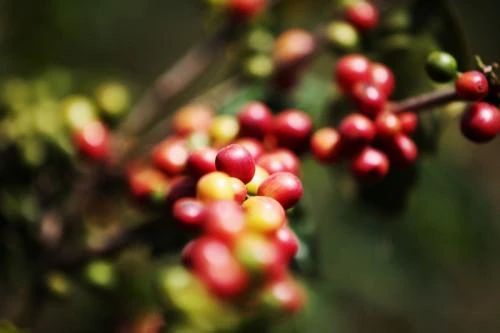
Colombian coffee producing area
Colombian coffee beans are divided into commercial beans and boutique beans. Commercial coffee beans are concentrated in central and northern Colombia, mostly large-scale entrepreneurial coffee farmers. Among them, the three well-known producing areas of "MAM" are Medell í n, Armenia and Manizales. The main flavor is the well-known Central American flavor with a strong sense of fruit acid. But Bucaramanga, produced in the northeastern province of Santander, is known for its low acidity and bitterness, similar to Indonesia's Mantenin. (this phenomenon may be due to the decrease in acidity in Kansai at a lower altitude.)
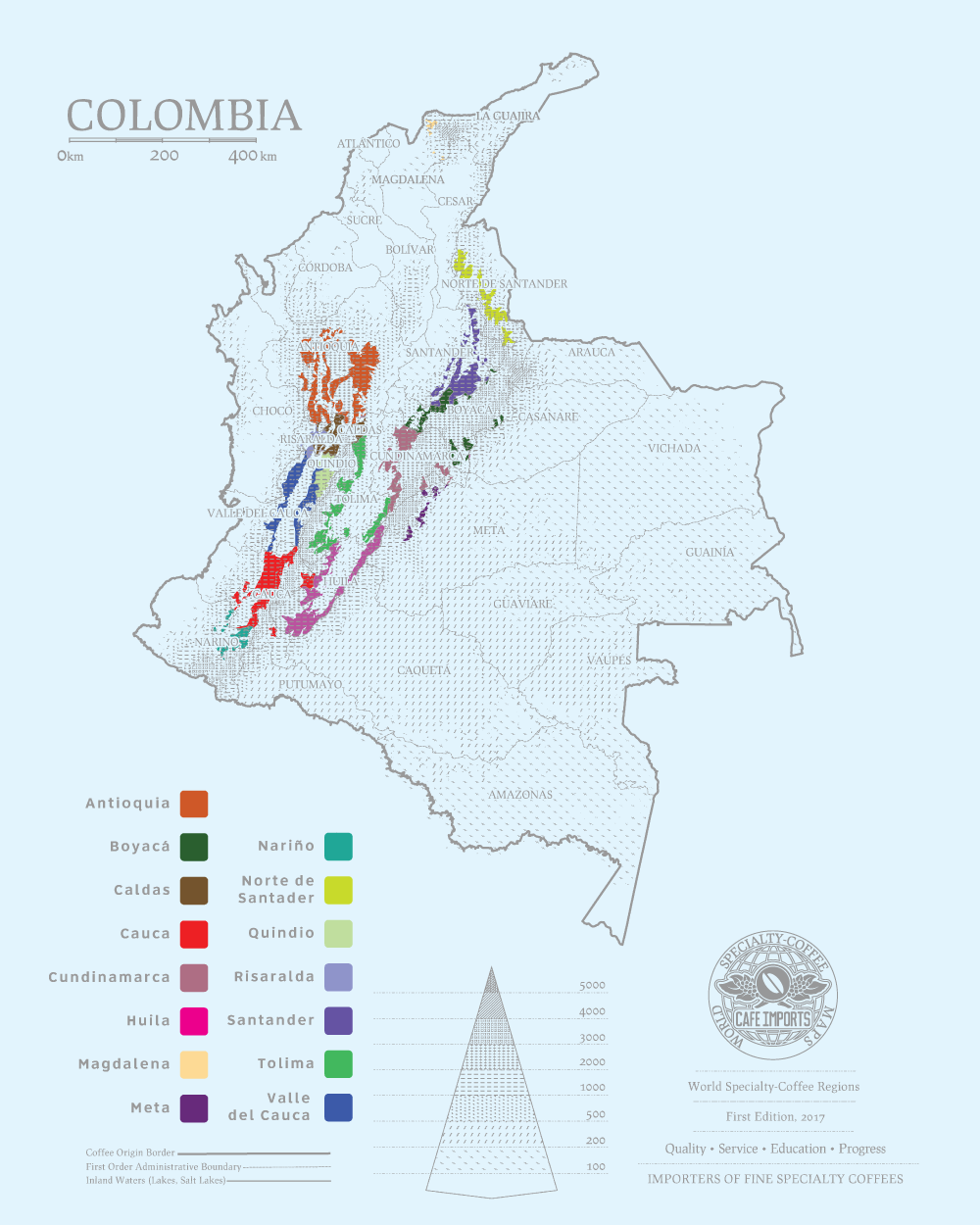
The producing areas of boutique coffee beans are mainly in the south, Haida is more than 1500 meters, and there are many volcanoes, creating many well-known boutique producing areas, including Cauca, Huila, Meta, Tolima, Nari ñ o, etc., the main flavor is caramel aroma, with refined berry aroma and sour aroma, and the sweet taste is obvious!
Antioquia Antioquia
The province of Antioquia, located in north-central Colombia, grows 126000 hectares of coffee and produces 18 per cent of Colombia's coffee beans, second only to Huila. Most of the province is alpine terrain belonging to the Andes, but it is blown by the warm Caribbean sea breeze. Medellin, the provincial capital, is Colombia's second largest city and an important coffee producing area in Colombia. Antioquia has been the "wild west" of the country for many years, initially settled almost entirely by gold miners. In the second half of the 19th century, Antioquia became one of the most important coffee producing areas in Colombia.
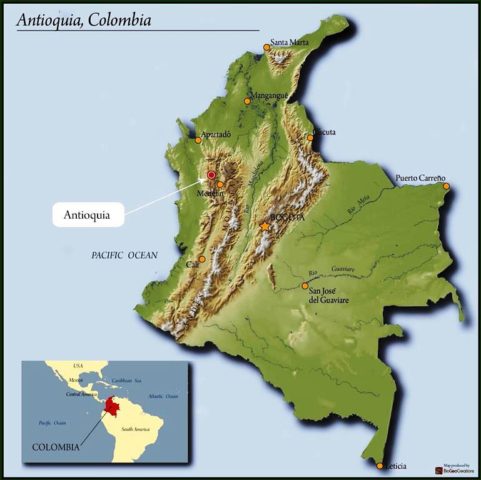
Chocó
Most of Choco's coffee is grown near the municipality of El Carmen de Atrato, separated from the fertile coffee-growing slopes of the southwestern province of Antioquia by only a steep ridge. The region is rich in biodiversity and one of the most remote in Colombia, having suffered violence and isolation in the past due to the presence of the Revolutionary Armed Forces of Colombia.
Chocó 's coffee area lies within the mountains bordering Antioquia, and there are no other viable routes for transporting coffee out of the area. Therefore, almost all coffee from Chocó is ground in Antioquia.
Huila Cymbidium
Cymbidium Province is located in the southern Central Mountains of southern Colombia and is the country's most famous boutique coffee-producing area. This area is surrounded by hills, planted at an altitude of more than 1500 meters, where the most important rivers in Colombia converge, bringing considerable water resources and moisture.
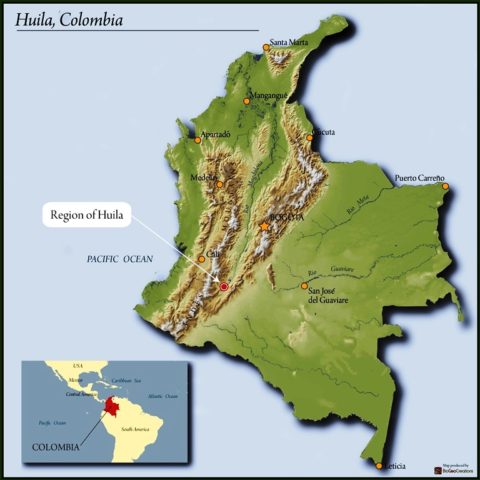
Contrary to the general impression that a large amount of Colombian coffee is balanced and smooth, the fine Goran products produced by many small farmers in micro batches are actually very characteristic of the flavor of the producing area. In recent years, with the attention to the quality of coffee and the demand for fine coffee in the international market, the original bean size grading system has been gradually abandoned to micro-batch (Micro-regional selections) provided by small farmers in micro-production areas, with dozens of small farmers providing their unit harvest into a micro-batch to sell, and because of this, they have more opportunities to measure by batch-by-batch cup. Directly pick out a lot of high-quality specific smallholder coffee.
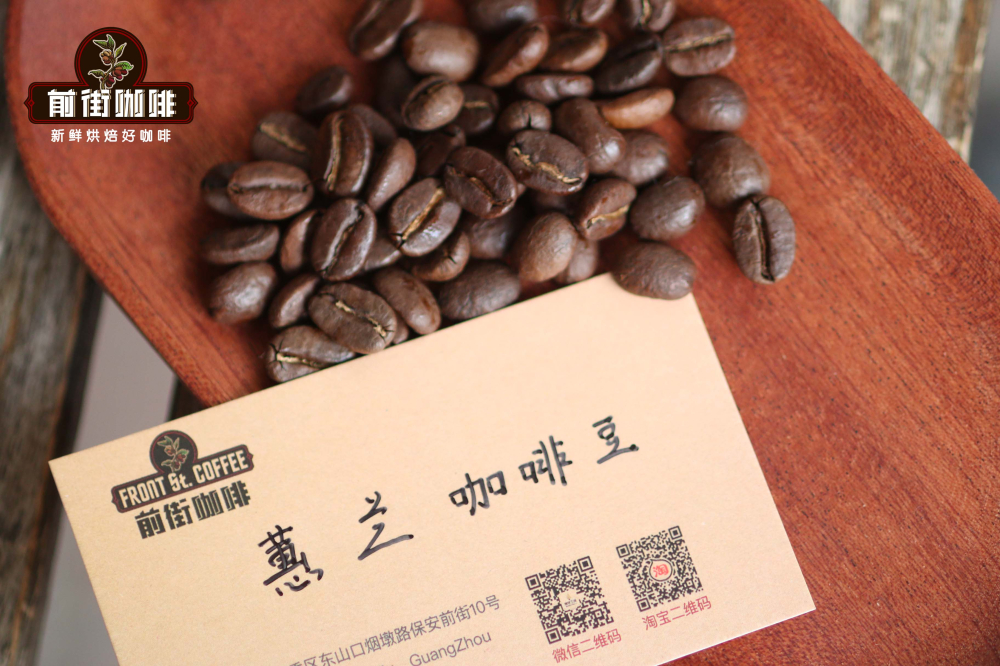
Qianjie Coffee Columbia Cymbidium
Producing area: Colombia
Variety: Kaddura
Treatment: washing
Baking: medium and deep baking
Altitude: 1500-1800m
Baking suggestion
This Colombian Huilan has high density, uniform order and full shape, so the front street baker wanted to show the bean with the aroma of nut, dark chocolate and caramel, so he adjusted the firepower after the explosion, extended the baking time, and put it into the pot at 3: 39, 202 ℃.
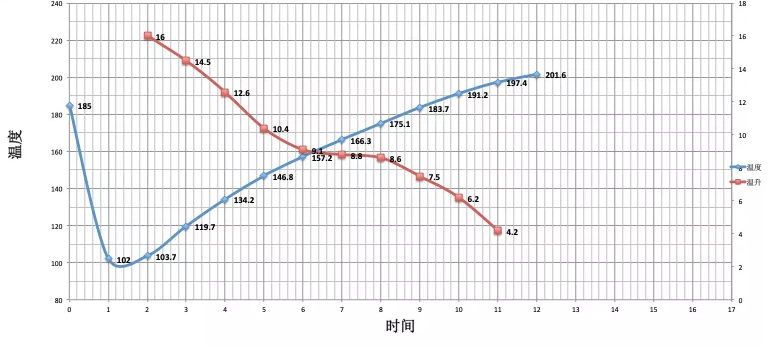
When the furnace temperature reaches 185C ℃, the throttle will open to 4 at 140℃, when the furnace temperature reaches 185℃, the throttle will be opened to 4; the bean surface will turn yellow, the smell of grass will disappear completely, and enter the dehydration stage. When the furnace temperature reaches 192℃, the firepower will be adjusted to 80, and the throttle will be opened to a maximum of 5 ℃.
Ugly wrinkles and black markings appear on the bean table, and the smell of toast obviously changes to the smell of coffee, which can be defined as a prelude to an explosion. At this time, it is necessary to listen carefully to the sound of the explosion point, to the sound of the explosion point, to the beginning of the explosion, and to the development of the pot after the explosion.
Cooking parameters
Filter cup: KONO filter cup
Water temperature: 86-87 ℃
Amount of powder: 15g
Powder / water ratio: 1:15
Degree of grinding: screen 20 passed 75%
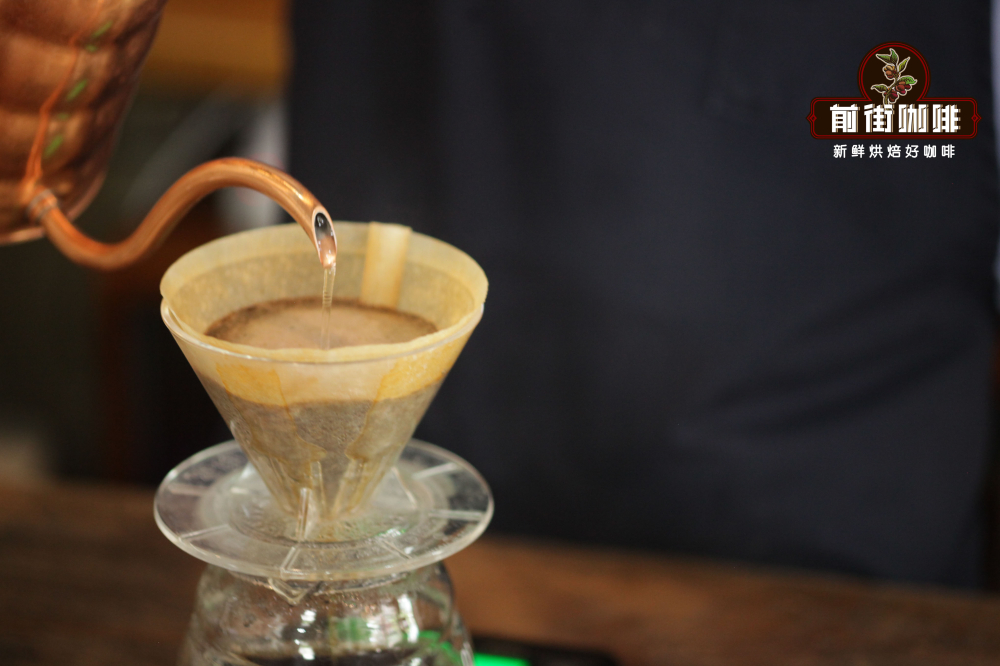
Washing and cooking technique
Segmented extraction
The first stage of water injection is steamed with 30 grams of water, the steaming time is about 30 seconds, the second stage is injected to 125 grams of water, when the water level is about to reveal the powder bed, continue the third stage water injection to the end of 225 grams, when the water level is about to expose the powder bed, remove the filter cup, (the time of steaming starts) the extraction time is 2 minutes 39 percent 00 ".
Flavor description
The overall balance is relatively balanced, with obvious sweetness, dark chocolate, nuts and caramel in the mouth, and a soft acidity under the change of temperature.
Narino Na Linglong
Narino province is located in the southwest of the country, facing the Pacific Ocean to the west and Ecuador (Ecuador) to the south. The Andes Mountains run through the province. Coffee is grown on a high-altitude cloud belt of 1600-2300 meters. The soil is fertile volcanic geology, the bean shape is small but full and the color is green. Most of the annual output of Nalinglong is purchased by large American soybean merchants. Narino province is located in the southwest of Colombia, bordering by the Pacific Ocean to the west and neighboring Ecuador (Ecuador) to the south, the Andes Mountains run through the province, where there are magnificent mountains and beautiful scenery, and there are many rivers flowing south through this area, belonging to Colombia's alpine coffee growing area, which has given birth to many small farmers of fine coffee. The total annual output of that Linglong province is about 150000 bags, while the part belonging to fine beans is only about 6000 bags.
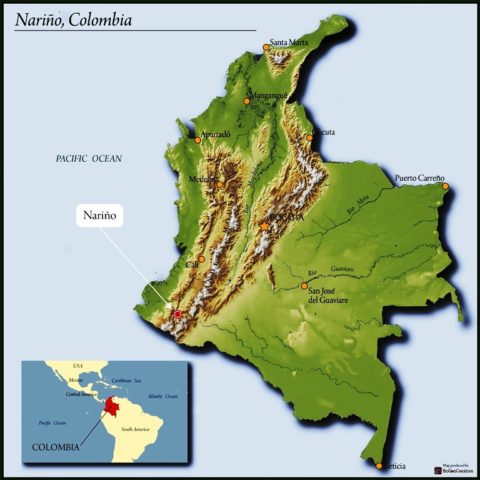
Santander/North of Santander Santander and North Santander
Santander is a famous producing area in northern Colombia, facing Magdalenaho to the west and growing about 1400-1600 meters above sea level. The coffee beans in this area are famous for their strong taste, long aftertaste and unique fresh vegetation flavor. A large number of Typica are grown in the area, most of which are certified by the Rainforest Alliance. The climate in this area is dry and the altitude is low.
Front Street Coffee Columbia Rose Valley
Manor: Columbia Tree Manor
Producing area: Santander producing area
Treatment: anaerobic double enzyme washing
Altitude: 1700 m
Variety: Kaddura
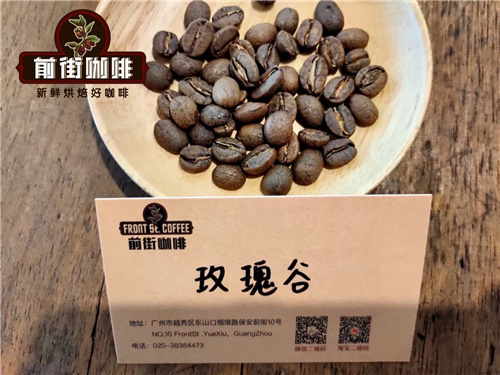
Baking suggestion
Enter the bean temperature: 180 ℃, turn yellow point: 6 times 39 percent 00 ", 151 ℃, one burst point: 9 percent 39 percent 48", 183.3 ℃, develop 2 percent 39 percent 10 "after one explosion, 197 ℃ out.
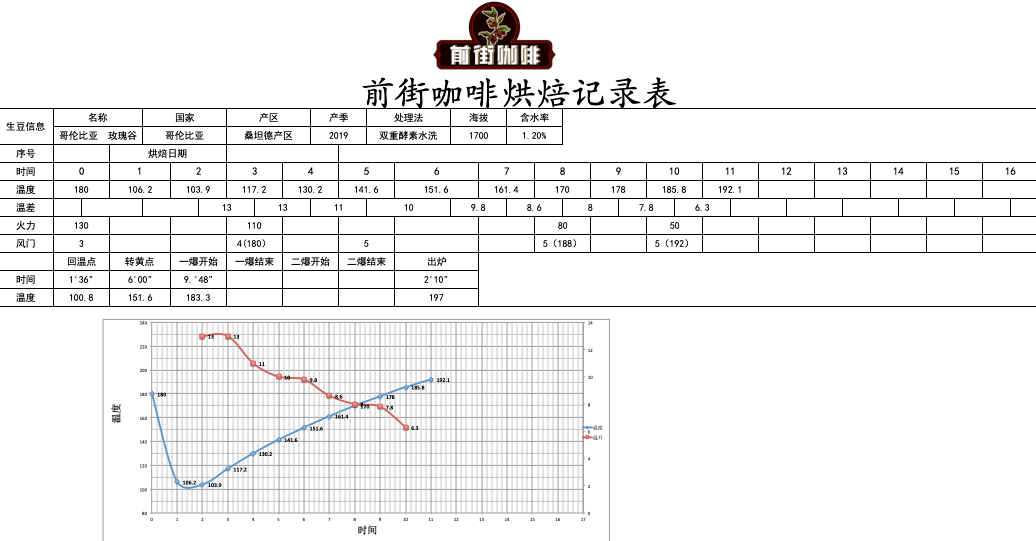
Cooking parameters
Filter cup: Hario V60
Water temperature: 90-92 ℃
Powder content: 15g
Powder / water ratio: 1:15
Degree of grinding: the pass rate of Chinese standard No. 20 screen is 80%.
Washing and cooking technique
The first stage water injection is steamed with 30 grams of water, the steaming time is about 30 seconds, the second stage water injection is divided to 125 grams of water, when the water level is about to expose the powder bed, continue the third stage water injection to the end of 225 grams, the filter cup is removed when the water level is about to expose the powder bed, and the extraction time is 2: 00 ".
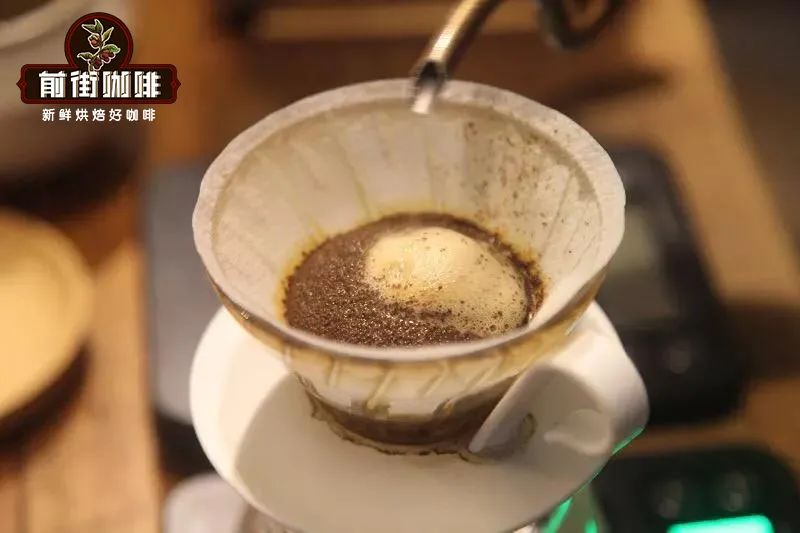
Flavor description
Floral aromas, bright acidity, outstanding sour and sweet, juicy taste, grapes, strawberries, green plums.
Sierra Nevada
The Sierra Nevada Mountains, a branch of the Andes on the Caribbean Sea in northern Colombia, is the highest mountain in Colombia. The peak is covered with snow all the year round, and the fine beans produced in this mountain area, named after the Sierra Nevada Mountains, have become more and more popular in recent years. In addition to being purchased by FNC (the state-run unit of Colombian coffee beans), coffee farmers organize cooperatives and sell them under the name of Sierra Nevada or Snow Cap (Xuefeng).
Tolima Tolima
Tolima is adjacent to huila and cauca, which runs through the north-south Andes (M. Andes) and the Cordillera Mountains (M. Cordillera). Between the two famous mountain systems is the Magdalena River (R. Magdalena) running from south to north.
The name Tolima comes from the earliest people who lived here, "Pijaopeople". In the language of this ancient people (Pijao word), tolima means "snow cover" and "snowed". The farms in Tolima are generally slightly larger than those in other southern Colombian producing areas, ranging from 10 to 15 hectares. The cooperative approach is also popular here, where farmers send their small batches of fresh coffee and fruit to the cooperative's processing plant. Some farmers will also choose to deal with it on their own, making use of their own small-scale treatment facilities that can handle the harvest of the day.
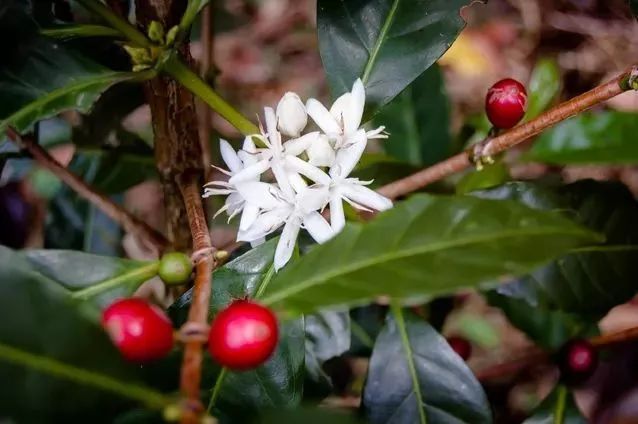
Front Street Coffee Columbia Rose Summer
Country: Colombia
Producing area: Tolima
Altitude: 1860m
Treatment: washing treatment
Grade: SUPREMO
Variety: Rose summer
Baking suggestion
This bean is relatively high above sea level and hard. In order to highlight the characteristics and aroma of this bean, we choose shallow baking so that the baking degree can give play to the characteristics of the bean itself and dehydrate with medium firepower.
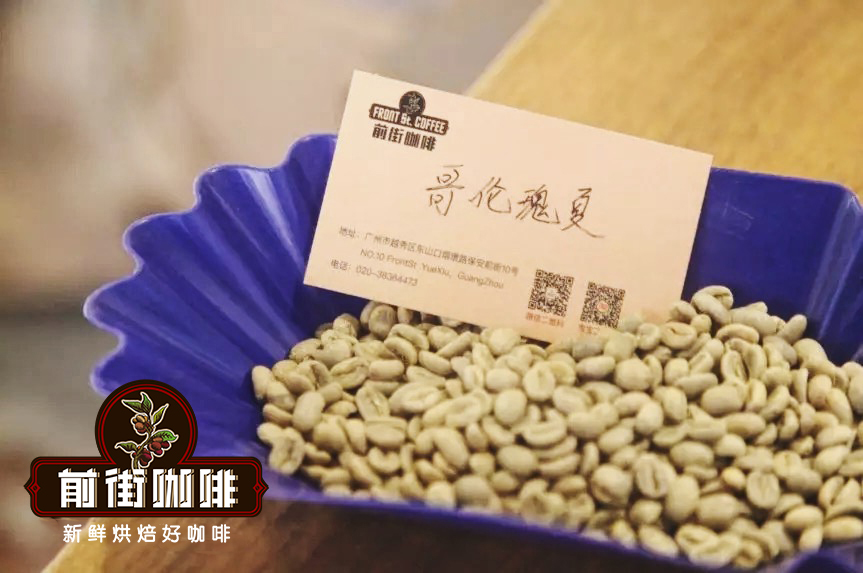
Roaster Yangjia 800N (baking capacity 300g)
Enter the pot when the furnace temperature is 180 degrees Celsius, adjust the firepower to 150 after opening the throttle for 30 seconds, the throttle remains unchanged, adjust the firepower to 130 at 140℃, open the throttle to 4; at this time, the bean watch turns yellow, the smell of grass disappears completely, enter the dehydration stage, when the furnace temperature reaches 166℃, adjust the firepower to 110C, the throttle remains the same.
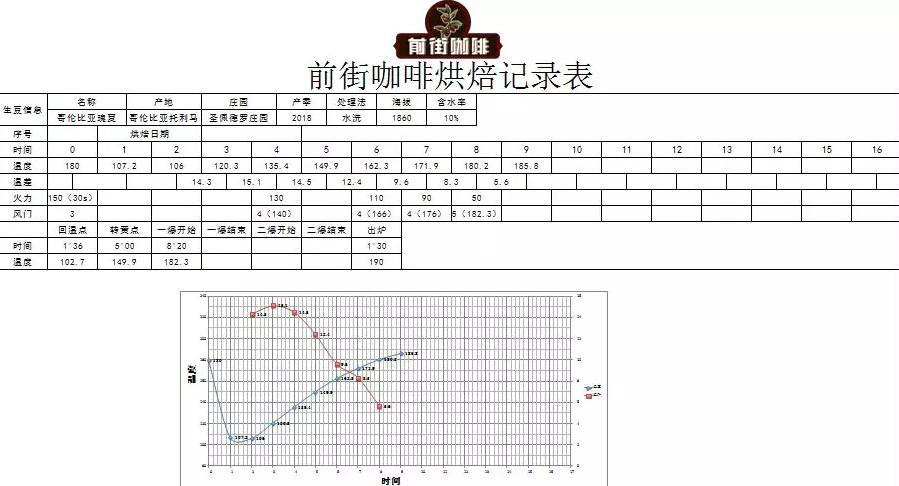
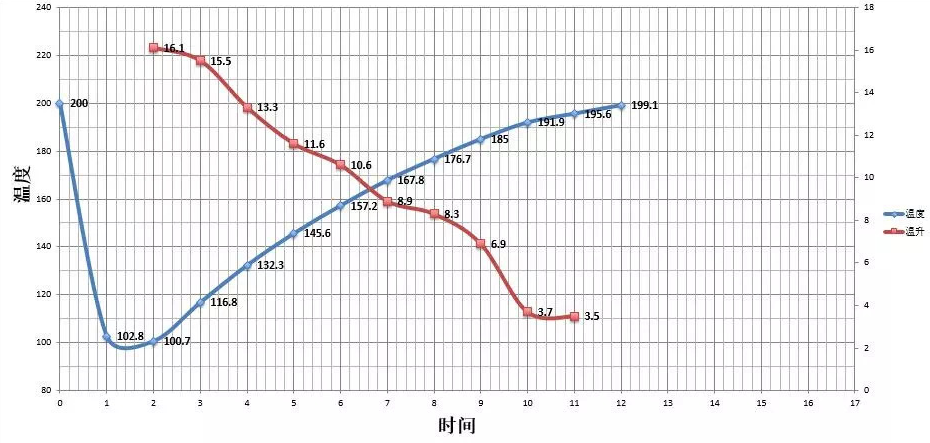
The smell of toasted bread has obviously changed to the smell of coffee, which can be defined as a prelude to an explosion. At this time, it is necessary to listen clearly to the sound of the explosion point, adjust the firepower to 50 degrees Celsius, adjust the throttle to 5 (the firepower should be very careful, and not be so small as to be free of bursting sound), and after the explosion, the development of one cup of bread 39th 30 ", 190 degrees into the pot.
Cooking parameters
Filter cup: Hario V60 or cake filter cup
Water temperature: 90-92 ℃
Powder / water ratio: 1:15
Degree of grinding: the pass rate of Chinese standard No. 20 screen is 80%.

Washing and cooking technique
The first stage water injection is steamed with 30 grams of water, the steaming time is about 30 seconds, the second stage water injection is divided to 125 grams of water, when the water level is about to expose the powder bed, continue the third stage water injection to the end of 225 grams, the filter cup is removed when the water level is about to expose the powder bed, and the extraction time is 2: 00 ".
Flavor description
When brewing, you can smell the sour aroma of citrus and the fragrance of green tea. when it is hot, the sugar and licorice feel sweet, with a little sour tone of lemon and the aftertaste of oolong tea, which is a bit like a cup of lemon tea. when the temperature comes down, the flavor of citrus is obvious, honey and sucrose are sweet for a long time, but there is a feeling of honey green tea when the temperature comes down.
Cauca test card
Cauca province is a certified coffee producing area in Colombia, with an average elevation of 1758m and a maximum elevation of 2100m. The topography, precipitation, temperature and volcanic soil of the area prepare suitable conditions for the growth of coffee. 80% is mountainous, with parallel mountain systems in the east and middle, part of the Andes, and the central mountain system includes two major volcanoes, Sotara and Petacas. The border province of Cauca, like other southwestern producing areas, has a distinct unimodal distribution (monomodal). The dry season mainly occurs from August to September each year, followed by a concentrated coffee season followed by the following year's concentrated coffee harvest season.
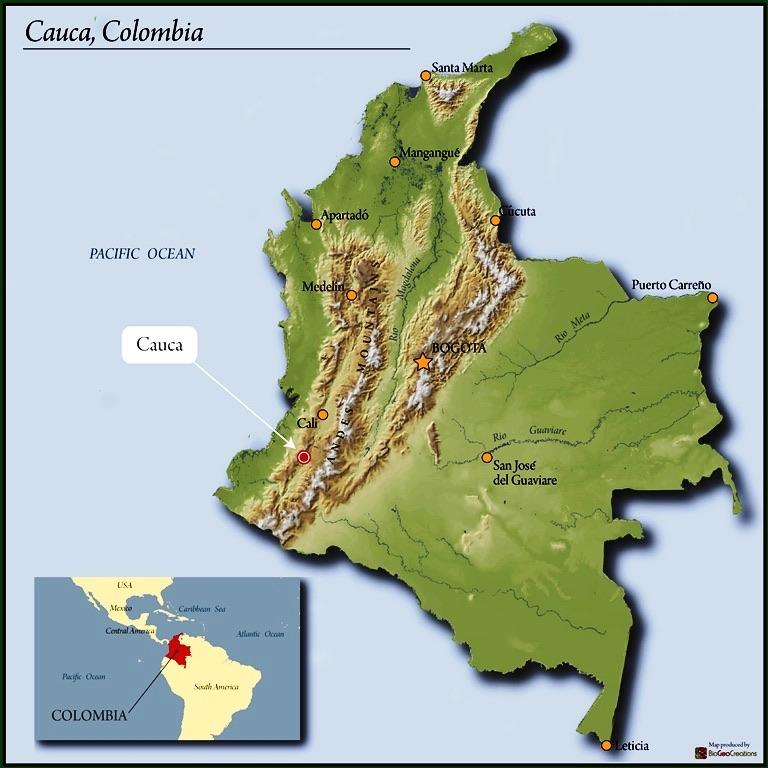
The biggest difference in climate with other producing areas is probably the relatively large temperature difference, with a daily average temperature of 11 ℃ and a daytime average temperature of 18 ℃. The temperature difference between day and night is an important factor in quality coffee. Low night temperatures and relatively higher elevations slow down the growth of coffee, allowing coffee seeds and beans to more fully absorb the nutrients of coffee fruits, as well as better acidity and commendable special sweetness of Coca Coffee.
Front Street Coffee Colombian Powder Bourbon
Country: Colombia
Producing area: Cauca Province
Manor: Palaiso Manor
Variety: powder bourbon
Treatment: washing treatment
Altitude: 1930 m
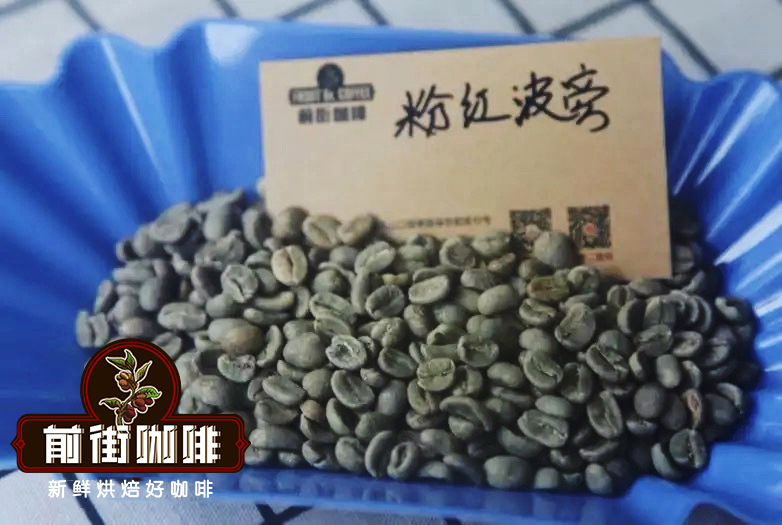
Baking suggestion
Roaster Yangjia 800N (baking capacity 500g)
Furnace temperature to 165℃ into the pot, throttle open 3, firepower of 100; tempering point 1mm 399 ℃, firepower unchanged, throttle open to 4; at this time the bean surface turns yellow, the smell of grass completely disappears, enter the dehydration stage, firepower drops to 60 when firepower drops to 80176 ℃ at 166℃, throttle remains unchanged.
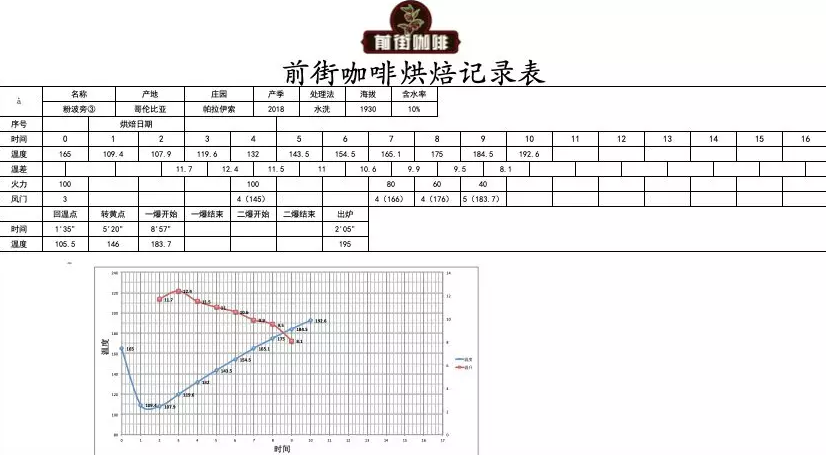
The smell of toasted bread has obviously changed to the smell of coffee, which can be defined as a prelude to an explosion. At this time, it is necessary to listen clearly to the sound of the explosion point, to the sound of the explosion point, adjust the firepower to 40, adjust the throttle to 5 (the firepower should be very careful and not be so small as to be free of bursting sound), and after the explosion, the development of 2 tons of bread 39fights 05 ", 195 degrees out of the pot.
Cooking parameters
Filter cup: Hario V60
Water temperature: 88-90 ℃
Powder / water ratio: 1:15
Degree of grinding: the pass rate of Chinese standard No. 20 screen is 80%.
Washing and cooking technique
The first stage water injection is steamed with 30 grams of water, the steaming time is about 30 seconds, the second stage water injection is divided to 125 grams of water, when the water level is about to expose the powder bed, continue the third stage water injection to the end of 225 grams, the filter cup is removed when the water level is about to expose the powder bed, and the extraction time is 2: 00 ".
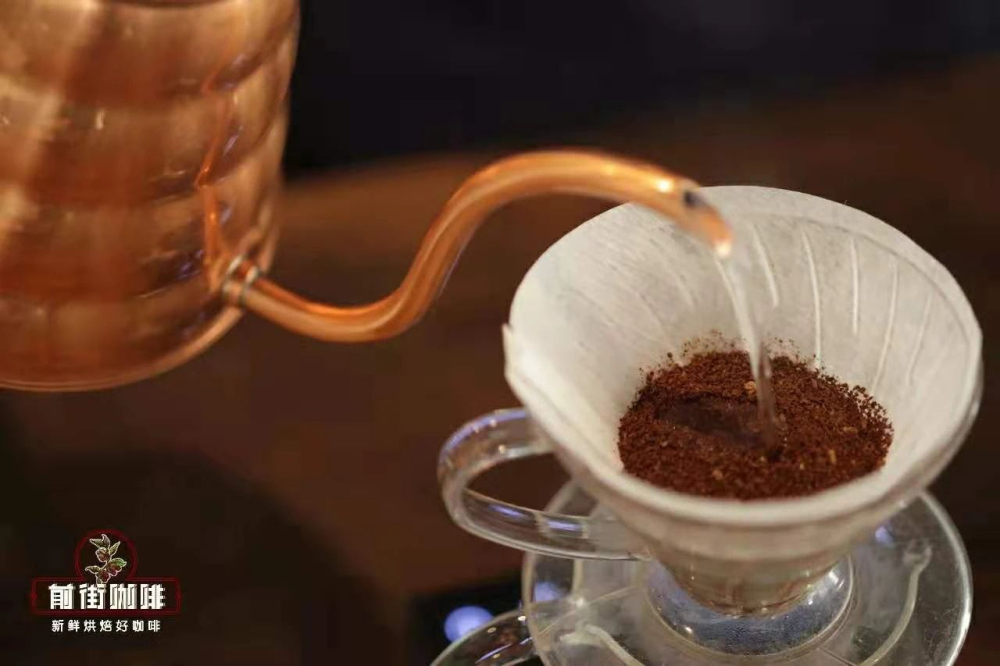
Flavor description
The whole is relatively clean and balanced, feeling more light and smooth, with peach, plum, grapefruit, cream, roasted almonds, cocoa flavor, lingering tea and flower aromas.
Coffee variety
The latitude span of the Colombian producing area and the topographic influence of the Andes are divided into three regions from south to north, northern, central, and southern; the northern part of the south has a distinct production season, and the central part has two primary and secondary seasons according to the north or the south, respectively. there are two harvest seasons in a year, the main season is from October to January, and the secondary season is from April to July.
In addition to the common coffee varieties in the Americas, such as Kaddura Caturra, Bourbon Bourbon, Tippika Typica and Parkmara, Colombia also has its own three disease-resistant varieties, namely Castillo Castillo and Tabi Tabi Colombian Colombia with the same name as the country. Of course, there are also some rare and valuable varieties such as Rosa Gesha, small-grained Mocha Mocca, Rume Sudan Romer Sultan, Eugenioides Eugene Odes, Laurina pointed Bourbon, Maraguesa Mara Rosa (a natural hybrid between Marago Rippi and Rosa).
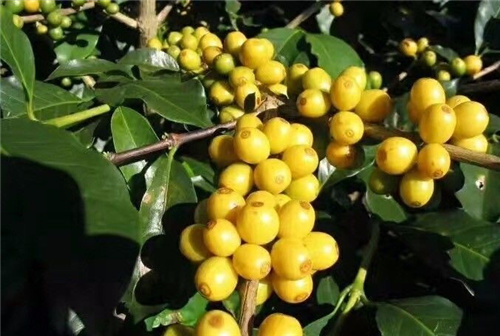
The early varieties planted in Colombia were the old iron pickup and bourbon, which were replaced by Kaddura in 1970; Kaddura is not only more productive per plant than iron pickup and bourbon, but also can be planted more per unit of acreage because the tree is more compact.
Since 1961, CENICAFE began to study Timor varieties of Robusta blood, and then selected Timor and Caturra into Columbia's Katim Catimor series. After five generations of breeding, CENICAFE released Colombia's first disease-resistant variety Colombia in 1982, and then after the emergence of leaf rust in 1983, Colombia varieties began to be planted in large quantities.
Subsequently, CENICAFE continued its research and development, releasing the second disease-resistant variety Tabi (a hybrid of iron pickup, bourbon and Timor) in 2002, and the most functional disease-resistant variety Castillo so far in 2005. After the outbreak of leaf rust in 2008, Colombia began to vigorously promote Castillo cultivation.
Treatment method
Colombian coffee is mostly washed, and every small farmer family has a small special processor (Ecomill or Eco-Pulper). The harvested coffee fruit is poured into it, which removes not only the peel and pulp, but also most of the pectin, and only a very small amount of water is needed. Next, the shell beans with a small amount of pectin will go into a small pool or container, which may be a cement pool (some tiles) or a stainless steel bucket that will ferment overnight and loosen the residual pectin. Rinse with clean water the next day, and the washing process is completed.
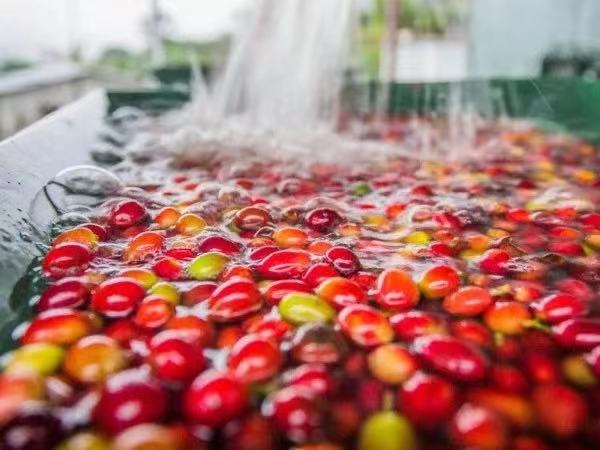
FNC
The Colombian Coffee producers Association FNC, including the Colombian National Coffee Research Center CENICAFE, regional coffee production associations (Colombia has 32 regional Departments, of which 20 are coffee growers), traders, international roasters, etc.
The biggest purpose of FNC is to be the spokesman of Colombian Coffee, promising that FNC is willing to buy as long as coffee farmers are willing to sell coffee. FNC not only works as the international ambassador of Colombian Coffee to do coffee marketing in the international market, and successfully creates the image of "Uncle Juan"; at the same time, Colombia has also invested a lot of manpower and material resources to participate in farmers' planting and production, management and continuous operation.
CENICAFE was founded in 1938, as the technical support of FNC, committed to coffee variety breeding, farmers planting production agronomic training.
Professional coffee knowledge exchange more coffee bean information please follow the coffee workshop (Wechat official account cafe_style)
For more boutique coffee beans, please add private Qianjie coffee on Wechat. WeChat account: kaixinguoguo0925
Important Notice :
前街咖啡 FrontStreet Coffee has moved to new addredd:
FrontStreet Coffee Address: 315,Donghua East Road,GuangZhou
Tel:020 38364473
- Prev
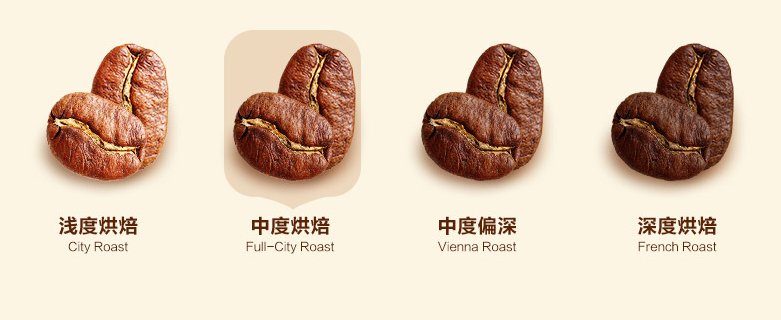
What's the difference between raw and cooked coffee beans? what's the difference? Mamba Italian matching scheme
Follow the caf é (Wechat official account vdailycom) and found that almost all the popular Italian coffee at present belongs to the category of mixed coffee. We usually mix two or more different varieties of coffee or the same variety of coffee while roasting different degrees of coffee.
- Next
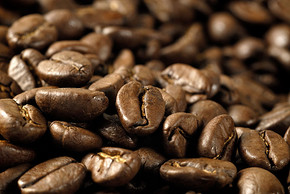
Detailed introduction of Colombian Coffee
Follow the caf é (Wechat official account vdailycom) found that the beautiful cafe opened a small shop of its own, Coca Cauca SUPREMO, Colombia: altitude: 1800-2100 m variety: Arabica packing: 70kg sack treatment: washing flavor: citrus, grapefruit, baked chocolate, caramel, mango sweet, rich texture, Yu Yunyou
Related
- Detailed explanation of Jadeite planting Land in Panamanian Jadeite Manor introduction to the grading system of Jadeite competitive bidding, Red bid, Green bid and Rose Summer
- Story of Coffee planting in Brenka region of Costa Rica Stonehenge Manor anaerobic heavy honey treatment of flavor mouth
- What's on the barrel of Blue Mountain Coffee beans?
- Can American coffee also pull flowers? How to use hot American style to pull out a good-looking pattern?
- Can you make a cold extract with coffee beans? What is the right proportion for cold-extracted coffee formula?
- Indonesian PWN Gold Mandrine Coffee Origin Features Flavor How to Chong? Mandolin coffee is American.
- A brief introduction to the flavor characteristics of Brazilian yellow bourbon coffee beans
- What is the effect of different water quality on the flavor of cold-extracted coffee? What kind of water is best for brewing coffee?
- Why do you think of Rose Summer whenever you mention Panamanian coffee?
- Introduction to the characteristics of authentic blue mountain coffee bean producing areas? What is the CIB Coffee Authority in Jamaica?

